It was a day of surprises. Spring is here (or no more than just around the corner), and the few frogs in the pond kindly obliged overnight by producing the first spawn of the year.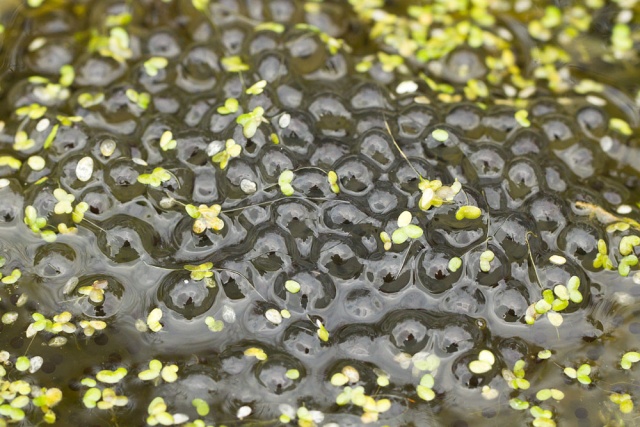
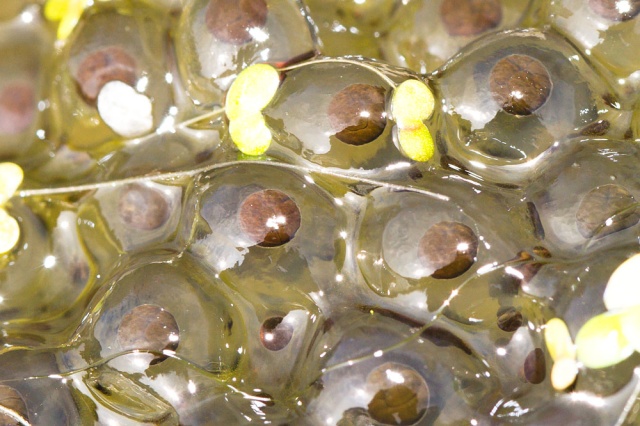
The newts are also more active, exploring outside the pond though the temptation of a frog spawn feast will no doubt have them scurrying back.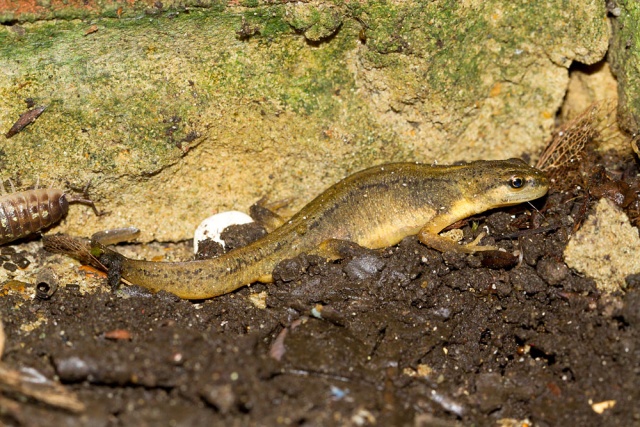
There aren't many flowers in bloom yet, but the early hellebores were attracting lots of bees.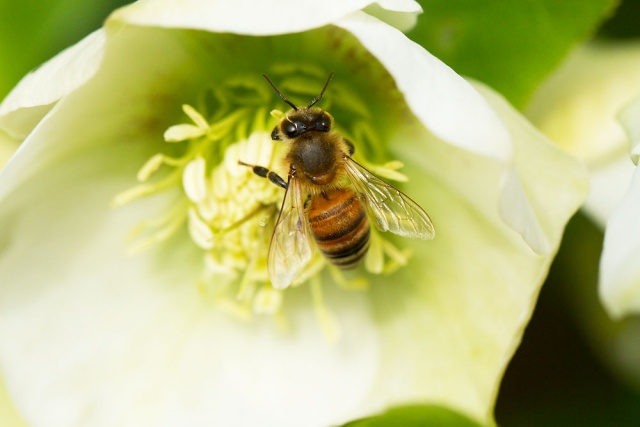
The ladybirds were also abundant. This one is clinging to some bark mulch.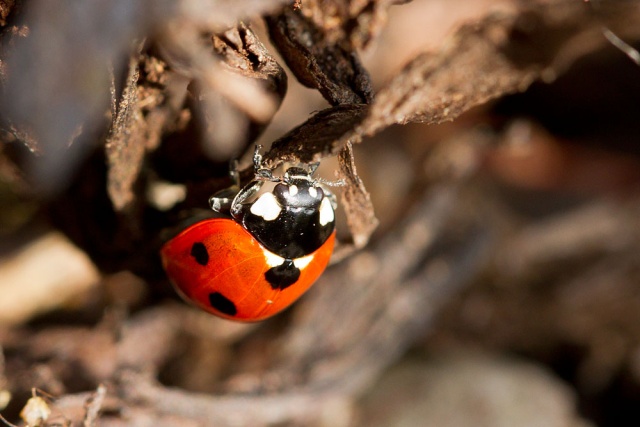
The biggest and best surprise was, however, something quite unexpected. I was cleaning out some leaves from the pond (carefully replacing the damselfly nymphs that cling to them), when the continual squawking of gulls suddenly changed into an eerie silence. I looked up. High, very high, in the sky an unfamiliar shape was circling over the garden. It was barely a dot to the naked eye, but with the help of a long lens the unmistakeable outline of a red kite came into view. Red kites are one of the great success stories of conservation. Their population had all but vanished, but through long term projects starting in Wales and the west of England, they have gradually re-populated much of the countryside. Sussex is on the very outer reaches of their re-established habitat and I've only seen them locally on about three or four occasions. Seeing one over our garden was very special! 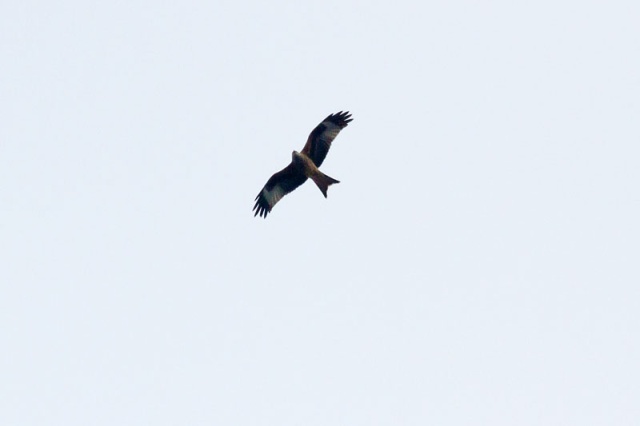
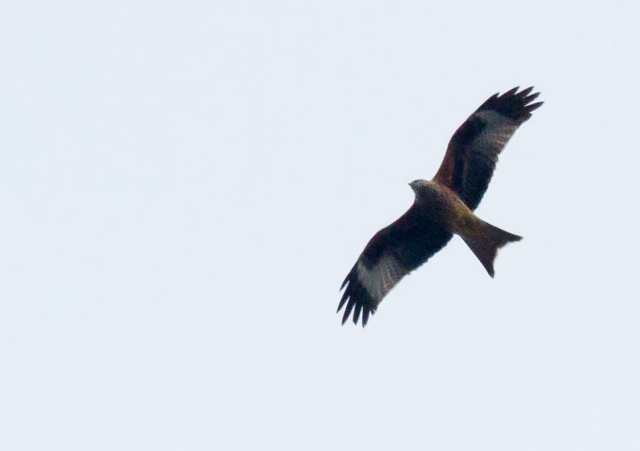
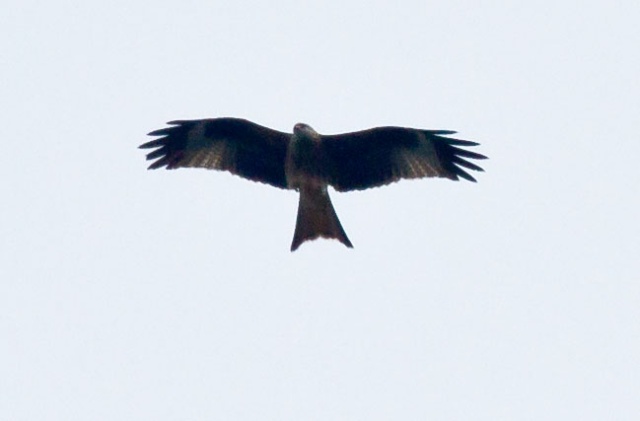
Camera note: red kite shots taken with the Canon 7D and EF 100-400mm f/4.5-5.6L USM IS lens. The macro shots were all taken with the EF 100mm f/2.8L macro IS USM lens.
derWandersmann
11 Mar 2012Handsome kite shots. Words! I have a mental image of you checking through the used-telephoto-lens listings.
Love the ladybird!
Words
12 Mar 2012dW, fortunately my local dealer has nothing that I want, but even second hand there will be nothing that I want that I can afford. I'll have to learn to fly if I want to get closer to these!
gdare
12 Mar 2012Soon that pond will be full of frogs, even if every 10th of those eggs survive 😀
cakkleberrylane
12 Mar 2012Some very healthy signs of spring! The red kite is beautiful! What a very exciting sighting!! I hope that seeing it just outside their of their re-established habitat, means that the projects are showing some success!
Words
13 Mar 2012Lois, the red kite projects have been very successful, and there are large flocks in some parts. They developed a network of feeding stations for them. One day I'll have to make a visit to somewhere like Gigrin Farm in Wales.
Words
13 Mar 2012Darko, 1/10 survivors would be a lot of frogs. I doubt they survive at 1/100 though! The newts are ferocious with spawn and tadpoles :chef:
cakkleberrylane
14 Mar 2012That's a very interesting site. I hope you do go. They certainly have some positive comments.
derWandersmann
14 Mar 2012Take plenty of money, though.
serola
14 Mar 2012Nice surprises :happy:
anonymous
15 Mar 2012TBR writes:
Paul –
I am insanely jealous of your pond now that we have moved from our old gaff and haven't had time to dig a new pond yet – good luck with all the amphibs!
Its also nice to see you getting excited about the kites. As you'll know, where I used to live, kites were every hour over the garden (and low too) and even at our new place, they're daily visitors.
Might I suggest you don't go to Gigrin to see the kites though – Watlington in Oxon is much closer and you'll have the kites to yourself (dozens and low) for as long as you like because everyone is used to them round there. There's also less fuel to be burned on the way and more to do (and see) in the surrounding areas (unless you prefer to mountain climb of course!)
Anyway, just a thought.
Doug
Words
16 Mar 2012Sami, yes it was good!
Words
16 Mar 2012Doug, thanks for the tip about Watlington. I hate heights anyway, and driving!
The garden pond is only small but it provides a good habitat for the newts, which have become rather dominant in recent years. I'm just pleased that the few frogs are managing to breed. Hopefully some tadpoles will make it through to hopping-state.
SittingFox
19 Mar 2012Congrats on the red kite! :yes: Magnificent bird.
derWandersmann
19 Mar 2012Originally posted by Words:
At least some types of tadpoles emit some sort of biochemical trigger when they are attacked, which, even though the tadpole is killed and eaten, spreads through the pond water, and produces growth in the surviving tadpoles that makes them less vulnerable. I wish I could give more information, but I've searched up, down, and sideways, and can't seem to get the right keywords.
Words
19 Mar 2012dW, that's a really interesting concept of species defence, but makes complete sense. The cane toad has a complex system of chemical releases, which doesn't quite do what you describe, but may have a similar impact (fewer, but larger tadpoles)
Words
19 Mar 2012Adele, I keep waiting for the kites to establish themselves properly here. It will happen eventually, and sightings are much more common (though still rare) than they used to be.